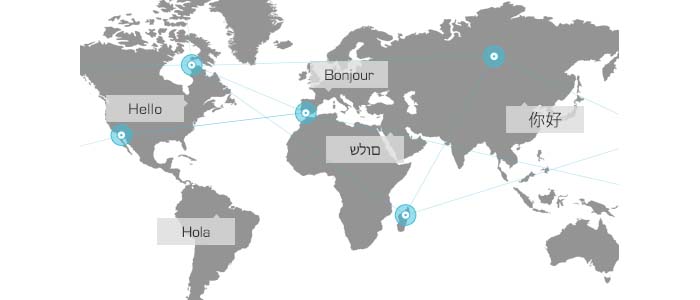10 Best Practices for Multilingual App Localization

Developing a smartphone application is no easy feat. Whether the app is an exciting, thrilling game, an informative travel guide, or a useful bodybuilding/exercising gadget, the app requires extensive research and countless testing before it is marketable. For all the diligent, tech-savvy developers and software companies out there, have you ever wondered which region would be the most ideal, the most profitable, to market your innovative app?
How can you maximize the number of downloads to generate the greatest return on your investment (ROI)? Does most of the traffic for your app come from Chinese-speaking or English-speaking areas, and how will this intended market find your app?
Localization plays a big part in the success of a product, in this case – your next big-break in the form of that app you’re currently working on or are planning to launch. We have attempted to come up with some suggestions for the best ways to localize your app:
1. Identify target languages and locales.
If you’re planning to take your app to India, best to have your app ready in Hindi, in addition to English. In addition, some regions have more than one way of expressing the same language. For instance, although the US and UK are both English-speaking countries, their spelling, word usage, and customs are vastly different. Localization would mean understanding and catering to these subtle differences to generate the most number of downloads.
2. Always adhere to each platform’s best practices.
When coding in iOS setting, try to follow the platform’s proper coding style.
3. Categorize and organize your content properly.
Not only will this allow your fellow programmers to understand and debug more efficiently, it will also help translators to make the wisest decision in multilingual localizations, thus saving your company enormous time and cost.
4. Do not hardcode.
For all the words that appear in your app, keep them in a dictionary or a resource cabinet, don’t hardcode them. Your translation agency should not be working with your codes. This will allow translators to access your language files much more quickly and minimizes room for misunderstanding.
5. Context!
When localizing your app, give your translation agency the context in which the word file being translated will be used. For example, is the file being translated an introduction or a step by step instruction to a workout routine? This will help the translators and editors to determine the most appropriate translation for the string of text that you send them.
6. Maintain a translation glossary.
To ensure consistency and efficiency, do maintain a translation glossary that your translation agency is capable of working with. This will keep the translation for key words and phrases consistent across files, and in turn, this will ensure that your branding and image are consistent.
7. Choose the best translation service provider.
Find a translation provider that doesn't charge for repetitions, and previously translated phrases or words. If you are using a cloud-based translation agency such as WritePath, which allows you to create a glossary that checks for consistency and repeated words, the glossary will also help to speed up the translation and editing process and help you to save cost. By utilizing fuzzy match and exact match, previously translated words will be logged and would not be used toward your allotted word count. As app development is a continuous process, in which same or similar word strings will occur repeatedly, this step will save you a considerably large sum.
8. Know the target language’s culture.
Multilingual localization is much more than simple translations. Knowing the culture of your intended market requires experience and insights – knowledge that your friend or freelance translator may not have. Having a translation agency that specializes in translations and localization will help you to overcome cultural barriers and to really communicate your services and products to your intended markets. In other words, speaking and writing using your intended market’s native tongue requires much more expertise than Google Translate or someone who has been studying the language for a couple of years.
9. Stand out among competitors in local app stores.
This is difficult if something gets lost in translations, and your multilingual app loses the meaning or excitement that your original app can easily convey. Having localized and catchy descriptions will help you to win over skeptical, on-the-fences target users.
10. Test and review your localized app.
Before you go on to test for line wrapping, word breaks, and/or layout direction, collaborate with your translation agency to have highly-trained editors proofread translated text and to look for untranslated text. Partnering with a translation agency that hosts in-house editors will significantly reduce your hassles of having to look for additional localization talents.
WritePath is a cloud-based translation agency that specializes in translations and editing in 35 languages and currently serves clients in 22 countries. We would be more than happy to assist you in all your multilingual app localization needs.
















